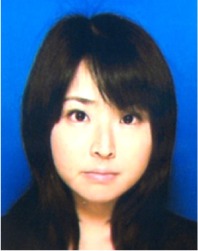Supplement Aims and Scope
Research into inflammation, atherosclerosis and coronary artery disease, including observational studies, clinical trials, epidemiology, and advances in applied (translational) research. The supplement is intended to include overviews of new concepts in pathophysiology, natural history, diagnostic strategies, and treatment approaches.
Articles should focus on vascular disease may include:
■ Diagnosis
■ Prognosis
■ Treatment
■ Screening
■ Prevention
■ Risk factor modification
■ Systematic reviews
■ Risk and safety of medical interventions
■ Epidemiology and statistical methods
■ Evidence-based medicine
■ Evaluation of guidelines
■ Translational medicine
Article types include original clinical and basic research articles, case reports, commentaries, meeting reports, methodology, perspectives.
Inflammation has been well recognized to play an important role in the development of atherosclerosis.1,2 Since chronic infection may lead to chronic systemic inflammation, many studies have investigated the associations between atherosclerotic diseases, such as coronary artery disease (CAD) and chronic infections by various microorganisms, including Chlamydia pneumoniae, cytomegalovirus, herpes simplex virus, and hepatitis C virus (HCV). However, these associations and precise mechanisms remain controversial. Several studies have suggested that more infectious pathogens, referred to as the infectious burden, rather than any single pathogen, may be involved in the development of atherosclerosis.3 In this supplementary issue of Clinical Medicine Insights: Cardiology, Ishizaka et al.4, reviewed the possible association between atherosclerosis and chronic HCV infection. In 2002, Ishizaka et al.5, first reported the higher prevalence of carotid artery plaques in HCV-positive patients than in control subjects, however, the findings of subsequent studies remain controversial, with some studies showing positive results and others negative.
Regarding the associations between inflammatory biomarkers and atherosclerotic diseases, many studies have demonstrated that elevated high sensitivity C-reactive protein (hsCRP) levels, which are one of the biomarkers of systemic inflammation, are a powerful predictor of future cardiovascular events, such as myocardial infarction (MI) and cardiac death.6 However, hsCRP levels vary remarkably among different ethnic populations, and hsCRP levels in East Asian populations are much lower in comparison to those in Western populations.7 In this supplementary issue of Clinical Medicine Insights: Cardiology, Saito et al.8, reported a meta-analysis of 8 prospective studies regarding the association between hsCRP levels and atherosclerotic diseases in East Asians. They demonstrated that East Asians had low hsCRP levels and that, even in East Asians, elevated hsCRP levels were associated with an increased risk of stroke, especially ischemic stroke. Enomoto et al.9, also showed hsCRP levels to be associated with all-cause death in 1920 healthy Japanese subjects. In addition to hsCRP levels, some new inflammatory biomarkers related to both metabolic and atherosclerotic diseases have been reported. In this supplementary issue, Furuhashi et al.10, reviewed the association between atherosclerosis and fatty acid-binding protein 4 (FABP4), one of adipokines, that is mainly expressed in adipocytes and macrophages and may play an important role in the development of insulin resistance and atherosclerosis. Elevated FABP4 levels were reported to be associated with obesity, diabetes mellitus and atherosclerotic diseases.11,12
Notably, there is a male preponderance of death due to atherosclerotic diseases, especially CAD, at a younger age than women, thus suggesting that sex hormones may play a major role in the process of atherosclerotic diseases.13,14 Estrogen has anti-inflammatory effects, and such hormones may alter the immune response during the development of atherosclerosis, thereby leading to different disease processes between men and women. In this supplementary issue, Fairweather et al.15, reviewed sex differences in the inflammatory immune response during atherosclerosis. Moreover, sex hormones are suggested to affect the process of myocardial inflammation and remodeling during myocarditis.
Systemic inflammatory responses are considered to play a major role in the destabilization of atherosclerotic plaques. The presence of inflammation in one artery is highly predictive of inflammation in other arteries.16 Imaging modalities are expected to noninvasively evaluate atherosclerotic plaques and inflammation within vessel walls. The glucose analogue 18F-FDG is taken up by metabolically active cells, especially macrophages, thus allowing the detection of inflammatory activity. Using this 18F-FDG tracer, positron emission tomography (PET) has become recognized as a reliable imaging technique for the detection of metabolic activity of atherosclerosis.17 Because the most important disadvantage is its limited spatial resolution, PET/computed tomography (CT) combines the excellent spatial resolution of CT with the high sensitivity of PET for the detection of inflammation. In this supplementary issue, Alie et al.18, reviewed the clinical usefulness of 18F-FDG-PET/CT for the noninvasive evaluation of atherosclerosis and inflammation in the carotid, coronary arteries and aortas.
A modern lifestyle with high fat diet and lack of physical activity promotes atherosclerosis. Obesity and high fat diet have been shown to be associated with chronic inflammation in human adipose tissues and arteries.19 Oxidative modification of LDL is an essential mechanism that increases their inflammatory potential, and dietary antioxidants, such as vitamins C and E and polyphenols, are the potential nutrients leading to the prevention of LDL oxidation and atherosclerosis progression. The inverse associations between the consumption of vegetables, fruits and fish and atherosclerotic diseases have been reported in many epidemiological studies, showing a reduced risk of such diseases. However, there are still many unclear points regarding the contribution of these foods to the prevention of atherosclerosis. In this supplementary issue, Saita et al.20, reviewed the preventative effects of antioxidant foods on atherosclerosis and CAD. In addition to vegetables and fruits, antioxidant polyphenols are rich in beverages, such as wine and black and green tea. Recently, a meta-analysis showed green tea consumption to be associated with a reduced risk of CAD.21 Green tea, which is very rich in catechins, is the most popular beverage in Japan. In this supplementary issue, Ohmori et al.22, reported the association between green tea consumption and MI in 725 Japanese patients. Moreover, they demonstrated the inhibitory effect of LDL oxidation and the anti-inflammatory effect of green tea in 22 healthy volunteers.
Inflammation is recognized to play an important role in both the initiation and progression of atherosclerotic diseases, such as CAD, however, the aim to prevent or treat atherosclerosis via modulating inflammation remains challenging. The articles in this supplementary issue of Clinical Medicine Insights: Cardiology encompass new research or timely reviews regarding inflammation, atherosclerosis and coronary artery disease.
Lead Guest Editor Dr Yukihiko Momiyama
Dr Yukihiko Momiyama is the Director of the Department of Cardiology at NHO Tokyo Medical Center in Tokyo. He received his MD from Keio University school of Medicine. He has previously worked at St. George’s Hospital Medical school in London and at the National Defense Medical College in Saitama. His research interests have focused on biomarkers, coronary artery disease, epidemiology, and MRI, especially plaque imaging. His previous studies have been published in a variety of peer-reviewed journals including Journal of the American College of Cardiology; Arteriosclerosis, Thrombosis, and Vascular Biology; Atherosclerosis, American Heart Journal, and American Journal of Cardiology.

ymomiyamajp@yahoo.co.jp
Guest Editors
HISASHI ADACHI
Dr. Hisashi Adachi is a Professor in the Department of Community Medicine, Kurume University, School of Medicine. He received his MD from Kurume University School of Medicine. He has previously worked at the University of Minnesota in the USA as a research fellow. His research interests have focused on novel risk factors, coronary artery disease, and epidemiology, and he is also interested in trends in nutritional intake shown in the Tanushimaru Study, one of the original cohorts of the Seven Countries Study. His previous studies have been published in a variety of peer-reviewed journals including Hypertension, Journal of Hypertension, American Journal of Hypertension, Atherosclerosis and others.

hadac@med.kurume-u.ac.jp
DELISA FAIRWEATHER
Dr. DeLisa Fairweather is an Associate Professor of Cardiovascular Diseases and Director of Translational Research at Mayo Clinic in Jacksonville, Florida. She also has an Adjunct appointment in the Department of Environmental Health Sciences at the Johns Hopkins Bloomberg School of Public Health in Baltimore, Maryland. Dr. Fairweather was responsible for papers on inflammation, atherosclerosis and coronary artery disease. She completed her PhD at the University of Western Australia and conducted her Postdoctoral Fellowship with Dr. Noel R. Rose at Johns Hopkins University School of Medicine before joining the faculty at the Johns Hopkins Bloomberg School of Public Health. She now works primarily to understand how sex hormones and environmental co-exposures like infections and chemicals increase chronic inflammatory diseases like cardiovascular and autoimmune diseases. Dr. Fairweather has received funding from the national Institutes of Health, the American Heart Association, and industry. She has authored 70 manuscripts and book chapters and has given over 80 national and international presentations.

Fairweather.DeLisa@mayo.edu
NOBUKAZU ISHIZAKA
Dr. Nobukazu Ishizaka is the Professor of the Faculty of Medicine at the Department of Cardiology, Osaka Medical College in Osaka. He received his MD from University Tokyo. He had previously worked at the Faculty of Medicine of University Tokyo in Tokyo. His previous studies have been published in a variety of peer-reviewed journals including Lancet, Circulation, Arterioscler Thromb Vasc Biol, Hypertension, Atherosclerosis, FEBS Lett, and Am Heart J.

ishizaka@poh.osaka-med.ac.jp
EMI SAITA
Dr Emi Saita is a lecturer of Endowed Research Department “Food for Health” at Ochanomizu University, and was responsible for papers on Anti-inflammatory Diet for Atherosclerosis and Coronary Artery Disease: Antioxidant Foods. She completed her PhD at Ochanomizu University. She now works primarily in developing understanding of inhibitory effects of nutritional factors on atherosclerosis. Her previous studies have been published in a variety of peer-reviewed journals including J Oleo Sci, J Clin Biochem Nutr, and Eur J Nutr.

saita.emi@ocha.ac.jp
Footnotes
COMPETING INTERESTS: DF discloses grants from NIH, NHBLI, NIEHS and AHA, outside the work presented here, and board membership for the Myocarditis Foundation. Other authors disclose no potential conflicts of interest.
All authors have provided signed confirmation of their compliance with ethical and legal obligations including (but not limited to) use of any copyrighted material, compliance with ICMJE authorship and competing interests disclosure guidelines.
REFERENCES
- 1.Alexander RW. Inflammation and coronary heart disease. N Engl J Med. 1994;331:468–49. doi: 10.1056/NEJM199408183310709. [DOI] [PubMed] [Google Scholar]
- 2.Ross R. Atherosclerosis: an inflammatory disease. N Engl J Med. 1999;340:115–26. doi: 10.1056/NEJM199901143400207. [DOI] [PubMed] [Google Scholar]
- 3.Zhu J, Quyyumi AA, Norman JE, et al. Effects of total pathogen burden on coronary artery disease risk and C-reactive protein levels. Am J Cardiol. 2000;85:140–6. doi: 10.1016/s0002-9149(99)00653-0. [DOI] [PubMed] [Google Scholar]
- 4.Ishizaka N, Ishizaka Y, Yamakado M. Atherosclerosis as a possible extrahepatic manifestation of chronic hepatitis C virus infection. Clin Med Insights Cardiol. 2014;8(S3):1–5. doi: 10.4137/CMC.S17069. [DOI] [PMC free article] [PubMed] [Google Scholar]
- 5.Ishizaka N, Ishizaka Y, Takahashi E, et al. Association between hepatitis C virus seropositivity, carotid-artery plaque, and intima-media thickening. Lancet. 2002;359:133–5. doi: 10.1016/s0140-6736(02)07339-7. [DOI] [PubMed] [Google Scholar]
- 6.Ridker PM, Cushman M, Stampfer MJ, Tracy RP, Hennekens CH. Inflammation, aspirin, and the risk of cardiovascular disease in apparently healthy men. N Eng J Med. 1997;336:973–9. doi: 10.1056/NEJM199704033361401. [DOI] [PubMed] [Google Scholar]
- 7.Saito I, Sato S, Nakamura M, et al. A low level of C-reactive protein in Japanese adults and its association with cardiovascular risk factors: The Japan NCVC- Collaborative Inflammation Cohort (JNIC) Study. Atherosclerosis. 2007;194:238–44. doi: 10.1016/j.atherosclerosis.2006.07.032. [DOI] [PubMed] [Google Scholar]
- 8.Saito I, Maruyama K, Eguchi E. C-reactive protein and cardiovascular disease in East Asians: a systematic review. Clin Med Insights Cardiol. 2014;8(S3):35–42. doi: 10.4137/CMC.S17066. [DOI] [PMC free article] [PubMed] [Google Scholar]
- 9.Enomoto M, Adachi H, Fukami A, et al. Circulating inflammatory and hemostatic biomarkers are associated with all-cause death and cancer death in a population of community-dwelling Japanese: the Tanushimaru Study. Clin Med Insights Cardiol. 2014;8(S3):43–8. doi: 10.4137/CMC.S17065. [DOI] [PMC free article] [PubMed] [Google Scholar]
- 10.Furuhashi M, Saitoh S, Shimamoto K, Miura T. Fatty acid-binding protein 4 (FABP4): pathophysiological insights and potent clinical biomarker of metabolic and cardiovasular disease. Clin Med Insights Cardiol. 2014;8(S3):23–31. doi: 10.4137/CMC.S17067. [DOI] [PMC free article] [PubMed] [Google Scholar]
- 11.Xu A, Tso AW, Cheung BM, et al. Circulating adipocyte-fatty acid binding protein levels predict the development of the metabolic syndrome: a 5-year prospective study. Circulation. 2007;115:1537–43. doi: 10.1161/CIRCULATIONAHA.106.647503. [DOI] [PubMed] [Google Scholar]
- 12.Yeung DC, Xu A, Cheung CW, et al. Serum adipocyte fatty acid-binding protein levels were independently associated with carotid atherosclerosis. Arterioscler Thromb Vasc Biol. 2007;27:1796–802. doi: 10.1161/ATVBAHA.107.146274. [DOI] [PubMed] [Google Scholar]
- 13.Shaw LJ, Bugiardini R, Merz CNB. Women and ischemic heart disease: evolving knowledge. J Am Coll Cardiol. 2009;54:1561–75. doi: 10.1016/j.jacc.2009.04.098. [DOI] [PMC free article] [PubMed] [Google Scholar]
- 14.Villablanca AC, Jayachandran M, Banka C. Atherosclerosis and sex hormones: current concepts. Clin Sci. 2010;119:493–513. doi: 10.1042/CS20100248. [DOI] [PubMed] [Google Scholar]
- 15.Fairweather D. Sex differences in inflammation during atherosclerosis. Clin Med Insights Cardiol. 2014;8(S3):49–59. doi: 10.4137/CMC.S17068. [DOI] [PMC free article] [PubMed] [Google Scholar]
- 16.Rudd JH, Myers KS, Bansilal S, et al. Relationships among regional arterial inflammation, calcification, risk factor and biomarkers: a prospective fluorodeoxyglucose positron-emission tomography/computed tomography imaging study. Circ Cardiovasc Imaging. 2009;2:107–15. doi: 10.1161/CIRCIMAGING.108.811752. [DOI] [PMC free article] [PubMed] [Google Scholar]
- 17.Rudd JH, Warburton EA, Fryer TD, et al. Imaging atherosclerotic plaque inflammation with 18F-fluorodeoxyglucose positron emission tomography. Circulation. 2002;105:2708–11. doi: 10.1161/01.cir.0000020548.60110.76. [DOI] [PubMed] [Google Scholar]
- 18.Alie N, Eldib M, Fayad ZA, Mani V. PET/CT for the evaluation of atherosclerosis and inflammation. Clin Med Insights Cardiol. 2014;8(S3):13–21. doi: 10.4137/CMC.S17063. [DOI] [PMC free article] [PubMed] [Google Scholar]
- 19.van Diepen JA, Berbee JFP, Havekes LM, et al. Interactions between inflammation and lipid metabolism: relevance for efficacy of anti-inflammatory drugs in the treatment of atherosclerosis. Atherosclerosis. 2013;228:306–15. doi: 10.1016/j.atherosclerosis.2013.02.028. [DOI] [PubMed] [Google Scholar]
- 20.Saita E, Kondo K, Momiyama Y. Anti-inflammatory diet for atherosclerosis and coronary artery disease: antioxidant foods. Clin Med Insights Cardiol. 2014;8(S3):61–5. doi: 10.4137/CMC.S17071. [DOI] [PMC free article] [PubMed] [Google Scholar]
- 21.Wang ZM, Zhou B, Wang YS, et al. Black and green tea consumption and the risk of coronary artery disease: a meta-analysis. Am J Clin Nutr. 2011;93:506–15. doi: 10.3945/ajcn.110.005363. [DOI] [PubMed] [Google Scholar]
- 22.Ohmori R, Kondo K, Momiyama Y. Antioxidant beverages: green tea intake and coronary artery disease. Clin Med Insights Cardiol. 2014;8(S3):7–11. doi: 10.4137/CMC.S17072. [DOI] [PMC free article] [PubMed] [Google Scholar]


